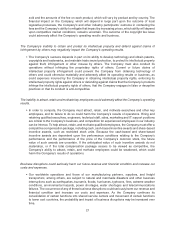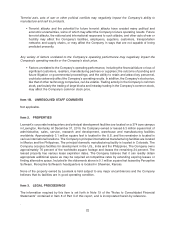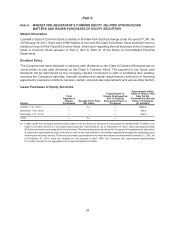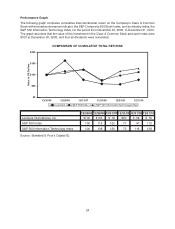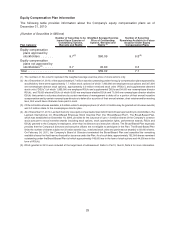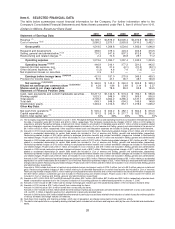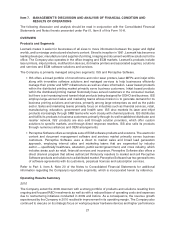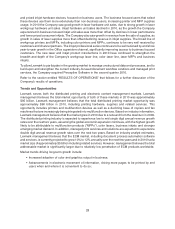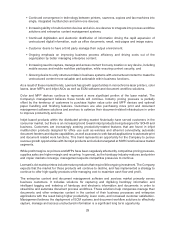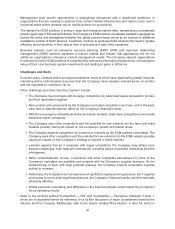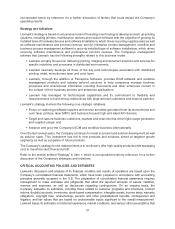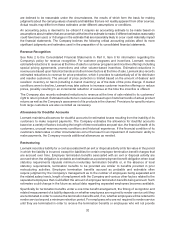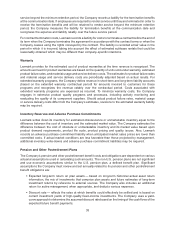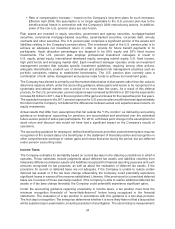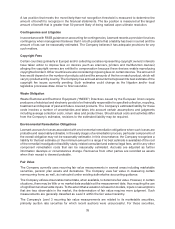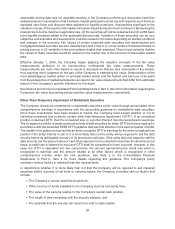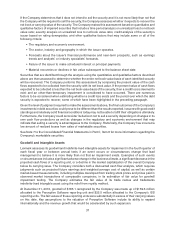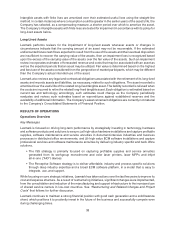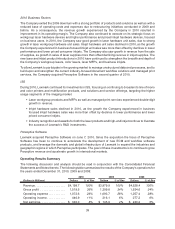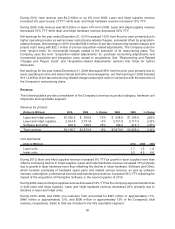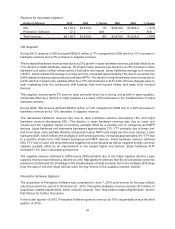Lexmark 2010 Annual Report Download - page 37
Download and view the complete annual report
Please find page 37 of the 2010 Lexmark annual report below. You can navigate through the pages in the report by either clicking on the pages listed below, or by using the keyword search tool below to find specific information within the annual report.incorporated herein by reference, for a further discussion of factors that could impact the Company’s
operating results.
Strategy and Initiatives
Lexmark’s strategy is based on a business model of investing in technology to develop and sell: (a) printing
solutions, including printers, multifunction devices and solution software with the objective of growing its
installed base of hardware devices and software installations, which drives recurring supplies sales as well
as software maintenance and services revenue; and (b) enterprise content management, workflow and
business process management software to grow its installed base of software installations, which drives
recurring software maintenance and professional services revenue. The Company’s management
believes that Lexmark has the following strengths related to this business model:
• Lexmark is highly focused on delivering printing, imaging and document solutions and services for
specific industries and processes in distributed environments.
• Lexmark internally develops all three of the key print technologies associated with distributed
printing; inkjet, monochrome laser and color laser.
• Lexmark, through the addition of Perceptive Software, provides ECM software and workflow
management products and industry tailored solutions to help companies manage business
processes and unstructured information including documents and other enterprise content in
the context of their business process and enterprise applications.
• Lexmark has leveraged its technological capabilities and its commitment to flexibility and
responsiveness to build strong relationships with large-account customers and channel partners.
Lexmark’s strategy involves the following core strategic initiatives:
• Focus on capturing profitable supplies and service annuities generated from its monochrome and
color laser printers, laser MFPs and business focused high-end inkjet AIO devices;
• Target and capture business customers, markets and channels that drive higher page generation
and supplies usage; and
• Advance and grow the Company’s ECM and workflow business internationally.
Over the last several years, the Company continues to invest in product and solution development as well
as solution sales. This investment has led to new products and solutions aimed at targeted growth
segments as well as a pipeline of future products.
The Company’s strategy for dot matrix printers is to continue to offer high-quality products while managing
cost to maximize cash flow and profit.
Refer to the section entitled “Strategy” in Item 1, which is incorporated herein by reference, for a further
discussion of the Company’s strategies and initiatives.
CRITICAL ACCOUNTING POLICIES AND ESTIMATES
Lexmark’s discussion and analysis of its financial condition and results of operations are based upon the
Company’s consolidated financial statements, which have been prepared in accordance with accounting
principles generally accepted in the U.S. The preparation of consolidated financial statements requires
management to make estimates and judgments that affect the reported amounts of assets, liabilities,
revenue and expenses, as well as disclosures regarding contingencies. On an ongoing basis, the
Company evaluates its estimates, including those related to customer programs and incentives, product
returns, doubtful accounts, inventories, stock-based compensation, intangible assets, income taxes, warranty
obligations, copyright fees, restructurings, pension and other postretirement benefits, contingencies and
litigation, and fair values that are based on unobservable inputs significant to the overall measurement.
Lexmark bases its estimates on historical experience, market conditions, and various other assumptions that
31


